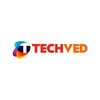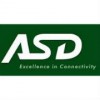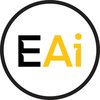
i
NexGen Innovators
Filter interviews by
NexGen Innovators Interview Questions and Answers
NexGen Innovators Interview Experiences
2 interviews found
(2 Questions)
- Q1. What is Schema markup
- Ans.
Schema markup is a code that you put on your website to help search engines provide more informative results for users.
Schema markup helps search engines understand the content on your website better
It can improve the way your page is displayed in search engine results pages (SERPs)
Schema markup can include information like ratings, reviews, prices, and more
Examples of schema markup include LocalBusiness, Product, Reci
- Q2. What is meta data
- Ans.
Meta data is information about a webpage that is not visible on the page itself but is used by search engines to understand the content.
Meta data includes meta titles, meta descriptions, and meta keywords.
Meta titles are displayed as the title of a search result.
Meta descriptions provide a brief summary of the webpage.
Meta keywords are not used by search engines anymore.
Meta data helps search engines understand the con
Skills evaluated in this interview
SEO Executive Interview Questions asked at other Companies
I applied via Naukri.com and was interviewed before Jun 2021. There were 2 interview rounds.
(1 Question)
- Q1. Do you like data structure and algorithms?
- Ans.
Yes, I enjoy working with data structures and algorithms.
I find data structures and algorithms fascinating and enjoy solving problems using them.
I have experience implementing various data structures like arrays, linked lists, stacks, queues, trees, and graphs.
I am familiar with common algorithms such as sorting, searching, and graph traversal algorithms.
I understand the importance of choosing the right data structure ...
The question was asked from the OOPs and Arrays.
Interview Preparation Tips
Skills evaluated in this interview
Full Stack Developer Interview Questions asked at other Companies
Top trending discussions






Interview questions from similar companies
Python Software Developer Interview Questions & Answers
Kreate Technologiesposted on 28 Jan 2025
The test went good with good logical questions
(3 Questions)
- Q1. They asked about the python frameworks related
- Q2. In this they about the flask and Django questions
- Q3. They asked about the Cloud related question API related questions.
(1 Question)
- Q1. Related to the discussion on my location
Interview Preparation Tips

Business Development Officer Interview Questions & Answers
Techved Consultingposted on 19 Oct 2024
I applied via Approached by Company and was interviewed in Sep 2024. There was 1 interview round.
(1 Question)
- Q1. Basic questions about the experience and the product worked on
Interview Preparation Tips
And also till the time you don't reach their office HR will follow up with you like anything ,once you enter the office then it's totally a different world. Mine second half of the day was totally wasted they call me in goregaon office & intentionally eats your time for the meet which was mutually pre booked and confirmed scheduled.So after filling the form i was made to wait for long time before this person Francis comes who was never present in whole process and again takes the interview & he asked everything in detail of companies worked ,your targets ,incentives, remuneration etc and when asked him about his company salary & incentive structure he didn't reply & said that will be informed later also the budget they have is less of what I am expecting but the incentive is great and people are making three times of salary as their incentive ,asked him whats the target given on which he reply it will be informed later ,They want to ask you everything & when you ask them response is, it will be informed later .I told him I already had a discussion with another HR about the budget on which i was assured its fairly in range and also I am here as per the CEO, for meeting him for final discussion.After that I was again made to wait for more than a hour and they keep moving you from 1st floor to 2nd floor as per their small conference room availability.After waiting for about 3 hour I told the HR that I am getting late & will be leaving as I have another work commitment on which HR looks for CEO and ask me to wait for few more minutes,just when I was about to meet CEO, Francis ask me to wait and sends a girl who came to interview much after me being there, which was highly unprofessional & then francis ask me to meet another guy on different floor for interview before meeting the CEO ,gave the interview to this new guy and again they want to know everything about you and when u ask about the job nature and process he said he is from finance team once you join the team will guide u ,also they don't pay u for the days you worked for since their salary cycle is 20 to 21 and they hold employee salary of the 10 days and give it as FNF when employee resigns which is absurd .So after extensively speaking with HR & CEO on call along with waiting for more than 3 hour Francis comes an says that I have more experience and they are looking for a junior role with less experience and I can leave now,I told him I spoke extensively with HR and also with the CEO ,who invited me for the final meeting .First company found where the HR is more powerful than CEO & override CEO commitment & does insult candidate with zero respect for candidate time. Too many hints they gave as Red Flag ,it's a typical lala company with baniya employees behaviour.
-10 rating for Techwait Insulting company
Ceo should make their HR write an essay on basic human interaction,work ethics ,Time management, professionalism & Toxic traits.
Life Tip - before joining this company make sure you have a good Health & Term insurance .

Corporate Salary Relationship Manager Interview Questions & Answers
Automated Systems Designposted on 9 Jan 2025
(2 Questions)
- Q1. Asdasdasdasdasdasdadsasdasda
- Q2. Asdasdasddasdasdasdasdasdasda

Senior Software Developer Interview Questions & Answers
ElectrifAiposted on 23 Oct 2024
I applied via Naukri.com and was interviewed in Sep 2024. There were 5 interview rounds.
Easy Level DS Questions - 30 mins
(2 Questions)
- Q1. Cloud Services related questions
- Q2. ETL Based question
A comprehensive coding test which included job role simulation.
Advanced Cloud Services questions
(2 Questions)
- Q1. Introduce yourself
- Ans.
I am a Senior Software Developer with 8 years of experience in full-stack development, specializing in Java and Angular.
8 years of experience in full-stack development
Specialize in Java and Angular
Strong problem-solving skills
Experience working in agile environments
- Q2. Why did you leave your last organisation
Interview Preparation Tips

Project Management Officer Interview Questions & Answers
HGS TECHNOLOGIESposted on 13 Nov 2024
I applied via Recruitment Consulltant and was interviewed in Oct 2024. There were 3 interview rounds.
Solve the problems of maths
(1 Question)
- Q1. It's about the computer knowledge
(1 Question)
- Q1. Take interview of the candidate
Interview Preparation Tips
- Maths and computer

Software Developer Interview Questions & Answers
Mithi Software Technologiesposted on 22 Nov 2024
I applied via Campus Placement and was interviewed in Oct 2024. There were 2 interview rounds.
Reasoning , maths , coding, english
Java python css c programming sql, html.
Interview Preparation Tips

I was interviewed in Jan 2025.
(2 Questions)
- Q1. What details can you provide about your profile and professional experience?
- Ans.
I am a software engineer with 5 years of experience in developing web applications using Java, Spring, and Angular.
5 years of experience in software development
Proficient in Java, Spring, and Angular
Developed web applications for various clients
Strong problem-solving skills
- Q2. About work and salary details
Discussion on logical thinking and problem-solving.
Please provide an assignment related to my skills.

I applied via Approached by Company and was interviewed in Aug 2024. There was 1 interview round.
(2 Questions)
- Q1. Find the second largest element in array
- Ans.
Find the second largest element in an array of strings.
Convert the strings to integers for comparison.
Sort the array in descending order.
Return the second element in the sorted array.
- Q2. Tell about oops in c++
- Ans.
Object-oriented programming concepts in C++
Encapsulation: bundling data and methods that operate on the data together. Example: class Car { private: int speed; public: void accelerate() { speed++; } };
Inheritance: creating new classes based on existing classes. Example: class ElectricCar : public Car { public: void charge() { cout << 'Charging...'; } };
Polymorphism: ability to present the same interface for different d...
Skills evaluated in this interview
NexGen Innovators Interview FAQs
Tell us how to improve this page.
Interview Questions for Popular Designations
NexGen Innovators Interview Process
based on 3 interviews
Interview experience
Interview Questions from Similar Companies
NexGen Innovators Reviews and Ratings
based on 32 reviews
Rating in categories
|
Front end Developer
4
salaries
| ₹2.2 L/yr - ₹5 L/yr |
|
Digital Marketing Executive
4
salaries
| ₹1.2 L/yr - ₹3.4 L/yr |
|
Full Stack Software Developer
4
salaries
| ₹3 L/yr - ₹4 L/yr |
|
Web Developer
3
salaries
| ₹2.2 L/yr - ₹2.8 L/yr |
|
SEO Executive
3
salaries
| ₹1.4 L/yr - ₹2.2 L/yr |

TCS

Infosys

Wipro

HCLTech
- Home >
- Interviews >
- NexGen Innovators Interview Questions










